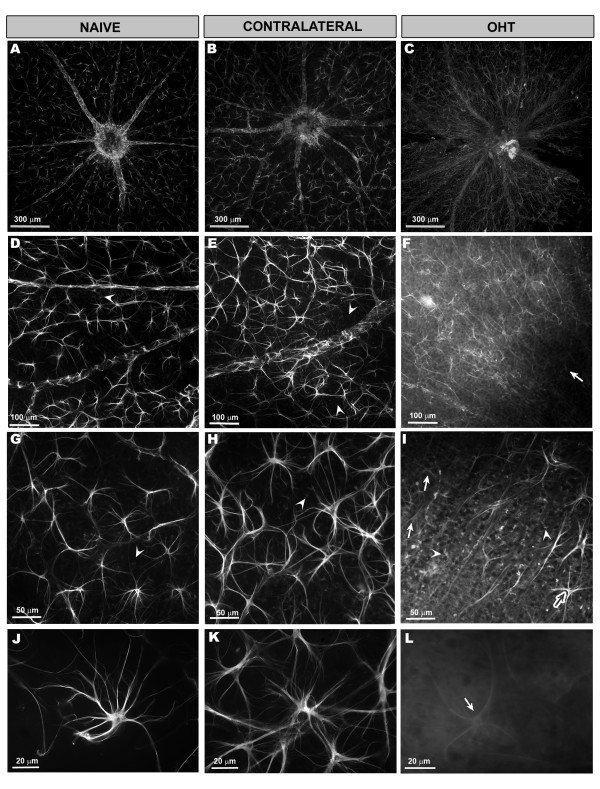Figure 3.
GFAP immunostaining of equivalent areas of the retinal whole-mounts. Astrocyte morphology and GFAP-IR of macroglial cells in naïve and in contralateral and OHT-eyes after 15 days of laser-induced OHT. A-C: overview of the retinal astrocytes around the optic disc in naïve (A), contralateral (B), and OHT-eyes (C). D-L: images correspond to zone 1 of study. In naïve eyes (A, D, G, J), astrocytes formed a homogeneous plexus on the nerve-fiber-RGC layer of cells regularly distributed throughout the retina. This plexus was constituted by stellate cells that could easily be distinguished from each other (D, G). Astrocytes had a rounded body from which numerous primary and secondary processes extended (J) and Müller cells (arrowhead) exhibited punctate GFAP+ structures between the astrocytes (D, G). In contralateral eyes (B, E, H, K), astrocytes were more robust (K) than in naïve eyes (J) and formed a honeycomb network (E, H, K). GFAP+ Müller cells were observed in some retinal areas (arrowhead) in (E, H). Astrocyte morphology in OHT-eyes (C, F, I, L) was not uniform, with astrocytes in which primary and secondary processes could be observed (empty arrow) in (I) and astrocytes in which only primary processes could be observed (arrow) in (I and L). GFAP+ Müller cells (C, F, I) were visible throughout the retina (arrowhead) in (I). Confocal microscopy (A-I); Fluorescence microscopy (J-L). GFAP-IR, glial fibrillary acidic protein immunoreaction; OHT, ocular hypertension; RGC, retinal ganglion cells.

